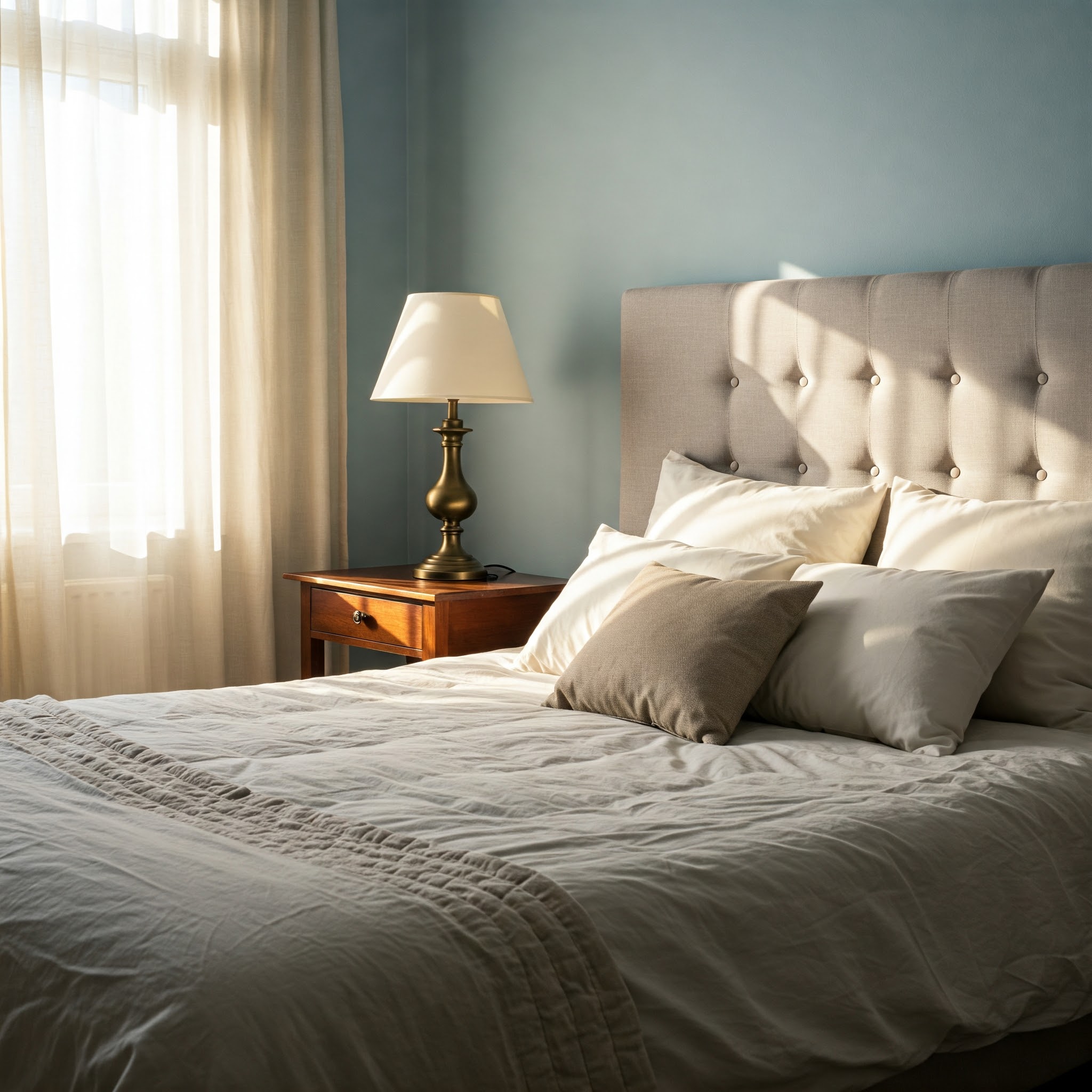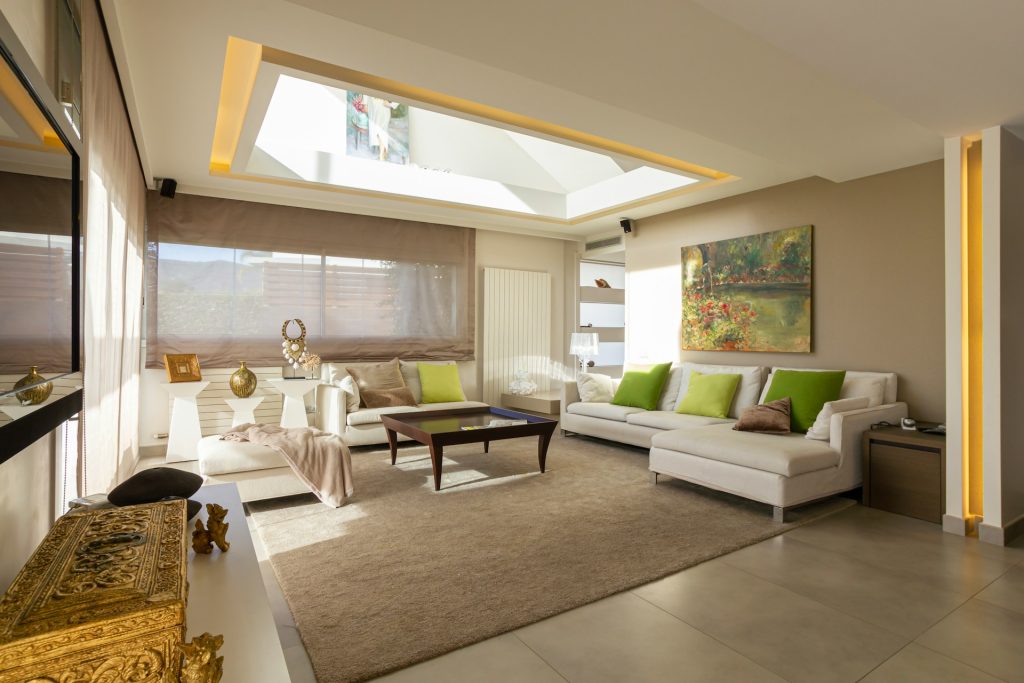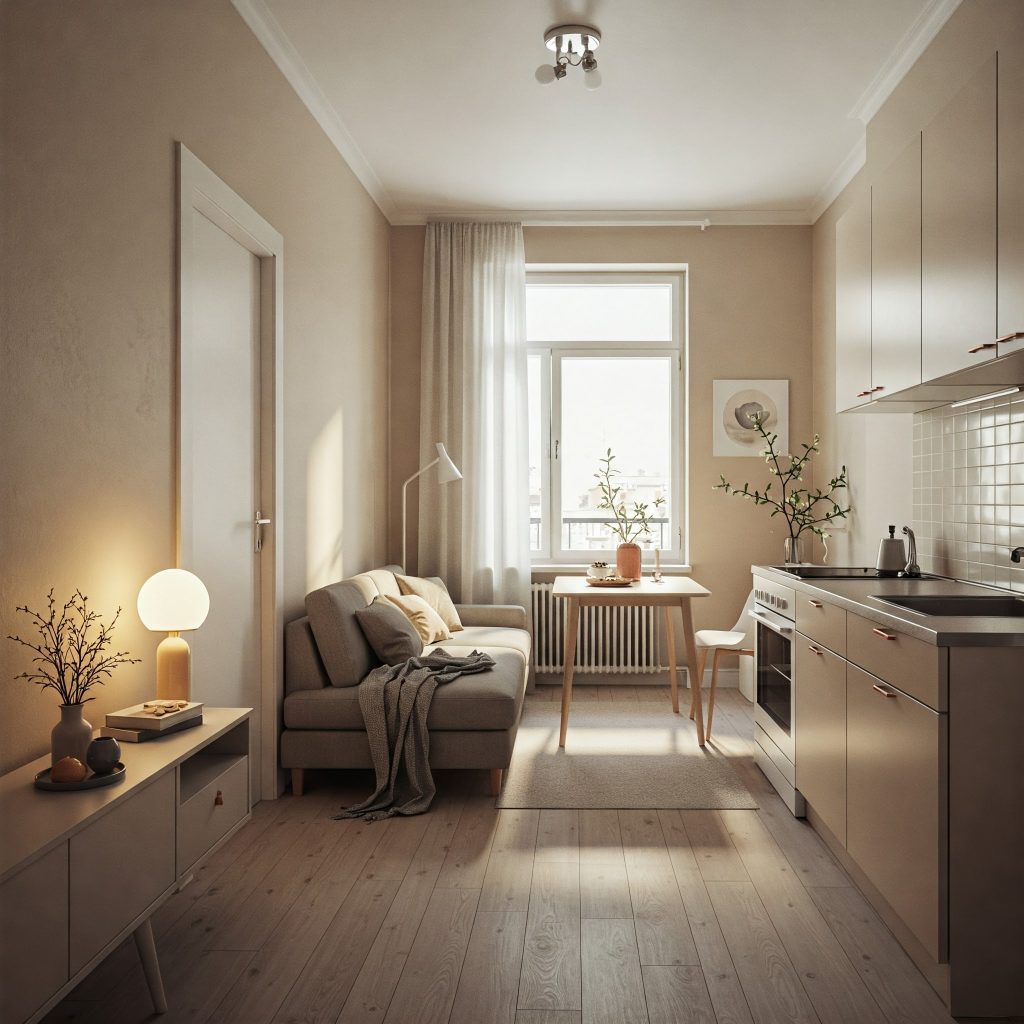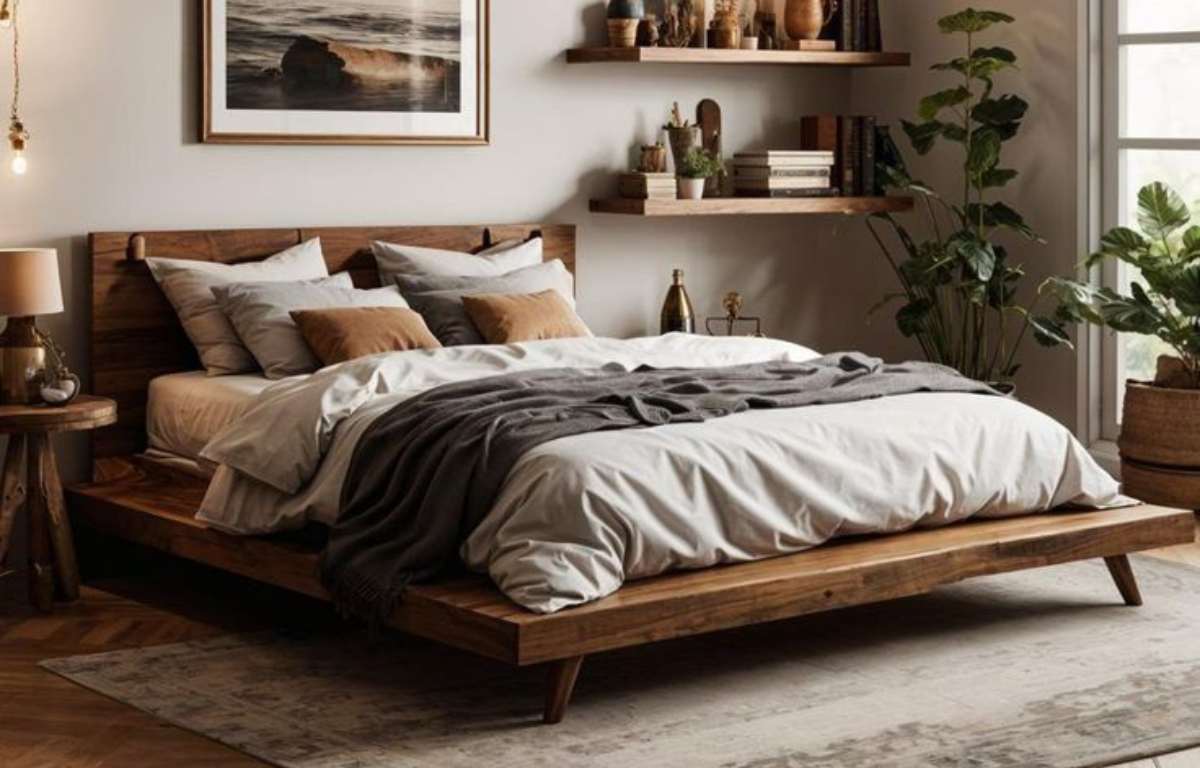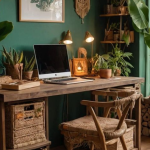A good night’s sleep starts with the right environment. Your bedroom should be a peaceful sanctuary where your body and mind can unwind after a long day. If your space is cluttered, overstimulating, or uncomfortable, it could be the hidden reason behind your restless nights.
Designing a calming bedroom isn’t just about aesthetics—it’s about creating an environment that encourages rest and relaxation. Below, we’ll walk through essential bedroom design tips that promote better sleep, broken down into easy-to-follow lists you can start implementing today.
1. Choose a Calming Color Palette
The colors in your room influence your mood and nervous system. A peaceful palette creates a soothing visual environment that helps signal bedtime.
- Use Soft, Cool Tones: Opt for colors like pale blue, soft green, lavender, or light gray. These shades are proven to reduce stress and heart rate.
- Avoid Bold or Bright Colors: Bright reds, oranges, and neons can overstimulate your senses and make it harder to wind down.
- Try Earthy Neutrals: Beige, taupe, and off-white tones provide warmth and serenity, offering a cozy yet clean look.
2. Invest in High-Quality Bedding
Your bed is the centerpiece of your sleep environment. Comfortable, breathable materials make a huge difference in how well you sleep.
- Choose Natural Fabrics: Look for sheets and pillowcases made from cotton, linen, or bamboo. They’re breathable, moisture-wicking, and gentle on the skin.
- Pick the Right Mattress and Pillows: Support matters. A mattress that suits your sleep style (firm, soft, or medium) can ease pressure points and reduce tossing and turning.
- Layer for Comfort: Add a duvet, throw blankets, and multiple pillows to make your bed feel luxurious and inviting.
3. Control the Lighting
Light has a powerful effect on your circadian rhythm. Controlling your bedroom lighting can help signal to your brain when it’s time to relax.
- Install Dim Lighting: Use soft, warm-toned bulbs or install dimmers to lower the light in the evening and promote melatonin production.
- Use Blackout Curtains: These block out natural and artificial light, creating a pitch-dark environment ideal for deep sleep.
- Avoid Screens Before Bed: Phones and TVs emit blue light that disrupts your internal clock. If you must use devices, enable night mode or wear blue-light-blocking glasses.
4. Eliminate Noise and Distractions
Unwanted noise and clutter can disrupt both your ability to fall asleep and your sleep quality.
- Use White Noise or Soothing Sounds: A white noise machine, fan, or sound machine with nature sounds can drown out street noise or household sounds.
- Keep Clutter Out of Sight: A messy room can create anxiety. Use storage bins, nightstand organizers, and under-bed storage to keep surfaces tidy.
- Remove Work-Related Items: Keep desks, laptops, and work supplies out of the bedroom. This space should be for rest—not work.
5. Regulate the Temperature
Temperature plays a key role in how well you sleep. Most people sleep better in a cool environment.
- Set the Ideal Temperature: Keep your room between 60–67°F (15–19°C) for optimal sleep. Your body naturally cools down at night, and a cooler room supports that process.
- Use Breathable Bedding: Lightweight sheets and a moisture-wicking mattress topper can help keep you cool throughout the night.
- Add a Fan or Air Circulator: Not only does it help with temperature, but it can also double as a source of white noise.
6. Incorporate Relaxing Scents and Textures
Your senses—beyond sight and sound—can influence relaxation. Touch and smell are powerful tools for creating a restful bedroom atmosphere.
- Add Aromatherapy: Use essential oil diffusers or pillow sprays with calming scents like lavender, chamomile, or sandalwood.
- Use Soft Textures: Incorporate plush rugs, cozy throws, and soft curtains to create a sense of warmth and comfort.
- Avoid Synthetic Fragrances: Stick to natural, non-toxic products to prevent headaches or irritations that can disrupt sleep.
7. Create a Consistent Bedtime Ambience
Consistency helps your brain know it’s time to sleep. A nightly routine paired with the right environment can train your body to wind down naturally.
- Establish a Wind-Down Ritual: Activities like reading, stretching, or journaling in your relaxing space can become sleep cues.
- Use Warm Lighting in the Evening: Lamps or salt lights with warm hues help your body transition into nighttime mode.
- Keep Your Sleep Space Sacred: Use your bedroom only for sleep and intimacy. This reinforces the mental association between your room and rest.
8. Use Minimalist Design Principles
A clutter-free space leads to a clutter-free mind. Simplicity in design promotes calmness and mental clarity.
- Stick to Essentials: Only keep what you truly need in the bedroom. A bed, nightstand, dresser, and maybe a reading chair—keep it simple.
- Opt for Clean Lines: Choose furniture and decor with smooth, simple shapes that don’t overwhelm the eye.
- Limit Decorative Items: A few intentional decor pieces, like a small plant or a framed picture, create a sense of calm without visual noise.
9. Incorporate Nature Into the Space
Biophilic design—bringing elements of nature indoors—has been shown to reduce stress and enhance sleep quality.
- Add Indoor Plants: Snake plants, lavender, aloe vera, and peace lilies purify the air and offer a calming presence.
- Use Natural Materials: Choose wood, stone, or woven textures (like rattan or cotton) to bring a grounded, organic feel to your room.
- Let Natural Light In: During the day, open curtains to let sunlight in. Exposure to daylight helps regulate your internal clock.
10. Choose Sleep-Friendly Flooring
Your choice of flooring impacts the feel and function of your space—especially if you walk barefoot at night or in the morning.
- Opt for Soft Rugs or Carpets: These add warmth and comfort underfoot, especially helpful during colder months.
- Use Area Rugs for Zones: Place rugs around your bed or reading nook to create a sense of softness and defined space.
- Avoid Noisy Flooring: Hardwood and laminate can be loud; adding rugs can reduce echo and improve room acoustics.
11. Personalize with Intention
Your bedroom should feel like your safe space. Thoughtful personalization can enhance emotional comfort and relaxation.
- Use Meaningful Decor: Choose artwork, photos, or objects that bring you peace, joy, or nostalgia.
- Incorporate Your Favorite Scents: Whether it’s a scented candle or diffuser blend, scent memory can create a calming environment.
- Create a Vision Board or Journal Space: A small corner with a personal journal or intention board can help with mindfulness before bed.
12. Improve Air Quality
The air you breathe while you sleep affects your rest. Poor indoor air quality can cause congestion, dry skin, and restless nights.
- Keep Windows Open (When Possible): Fresh air circulation removes indoor pollutants and supports better breathing.
- Use an Air Purifier: Especially useful in areas with dust, allergens, or pet dander.
- Avoid Synthetic Fabrics and Cleaners: Opt for organic cotton, non-toxic paints, and natural cleaning products.
13. Keep Technology to a Minimum
Tech-free bedrooms are better for rest. The less stimulation before bed, the easier it is to fall—and stay—asleep.
- Charge Devices Outside the Room: Eliminate the temptation to scroll late into the night.
- Use a Traditional Alarm Clock: Replace your phone with a simple analog clock or sunrise alarm for a peaceful wake-up.
- Turn Off Wi-Fi at Night: Some people find fewer disruptions in sleep quality by turning off routers and reducing EMF exposure.
14. Pay Attention to Room Layout
How you position furniture affects the room’s flow and your subconscious sense of calm.
- Keep the Bed as the Focal Point: Place your bed where it’s easily accessible and central in the space.
- Avoid Blocking Windows or Doors: This keeps energy and light moving freely through the room.
- Follow Feng Shui Principles: If you’re open to it, concepts like the “command position” (where you can see the door from the bed) can add a sense of safety and control.
15. Add a Cozy Reading Nook
Creating a space for quiet, screen-free wind-down time can ease you into restful sleep.
- Use a Comfy Chair or Bean Bag: Choose soft seating with a small throw or cushion.
- Include Soft Lighting: A floor or table lamp with a warm glow helps set a cozy mood.
- Keep a Few Books Nearby: Reading something light before bed is one of the best sleep-promoting habits.
16. Declutter Nightstands and Surfaces
A clean bedside table encourages peace of mind and keeps nighttime routines stress-free.
- Only Keep Bedtime Essentials: Like a book, water bottle, diffuser, or lip balm.
- Use Drawer Organizers: Hide away cords, pens, or random items to avoid visual clutter.
- Decorate Sparingly: A small lamp, one photo frame, or a calming stone like amethyst or rose quartz can add calm energy.
17. Choose Peaceful Wall Art
What you see before you close your eyes (and when you wake up) can affect your mood.
- Pick Serene Images: Think landscapes, nature prints, or abstract art in soft hues.
- Avoid Busy or Aggressive Imagery: Bright, chaotic art can feel stimulating instead of soothing.
- Use Symmetry: Balanced wall decor tends to feel more stable and relaxing.
18. Soundproof Where Possible
Reducing outside noise can drastically improve sleep quality, especially in city apartments or noisy households.
- Seal Gaps Around Doors and Windows: Use weather stripping or draft stoppers to muffle sound.
- Use Heavy Curtains: Blackout or thermal curtains also help absorb noise.
- Hang Soft Furnishings: Wall hangings, upholstered headboards, or even a fabric wall panel can reduce sound reflection.
19. Keep Pets in Mind
If you sleep with pets or they share your bedroom, make adjustments to support uninterrupted rest.
- Give Pets Their Own Space: Designate a pet bed or corner so they don’t disturb your sleep.
- Use Washable Covers: For any furniture your pet may climb on, so you can keep it clean and allergen-free.
- Consider a Pet Gate or Crate: Especially if your pet tends to wander or make noise at night.
20. Add a Touch of Luxury
Luxury doesn’t have to mean expensive—it’s about comfort, elegance, and personal care.
- Upgrade Your Bedding: Try sateen, Egyptian cotton, or silk pillowcases for a high-end feel.
- Use a Scented Linen Spray: Lavender or eucalyptus linen mists add a spa-like touch to your nightly routine.
- Add a Small Bench or Ottoman: At the end of the bed, this adds function and style while making your space feel curated.
21. Align Lighting with Your Circadian Rhythm
Smart lighting can support your natural sleep-wake cycle.
- Use Smart Bulbs with Timer Settings: Automate them to dim gradually in the evening and brighten in the morning.
- Try a Sunrise Alarm Clock: These simulate natural sunrise to help you wake gently.
- Switch to Red or Amber Bulbs at Night: These colors are less disruptive to melatonin production.
Final Thoughts: Your Bedroom Should Be a Sleep Sanctuary
Designing a relaxing bedroom doesn’t have to be expensive or complicated. With the right choices in color, lighting, bedding, and atmosphere, you can create a space that supports deep, restorative sleep.
Remember: your sleep quality affects everything—from your mood and energy to your productivity and health. Prioritize your bedroom as the personal retreat it’s meant to be, and watch how your nights—and days—start to transform.
